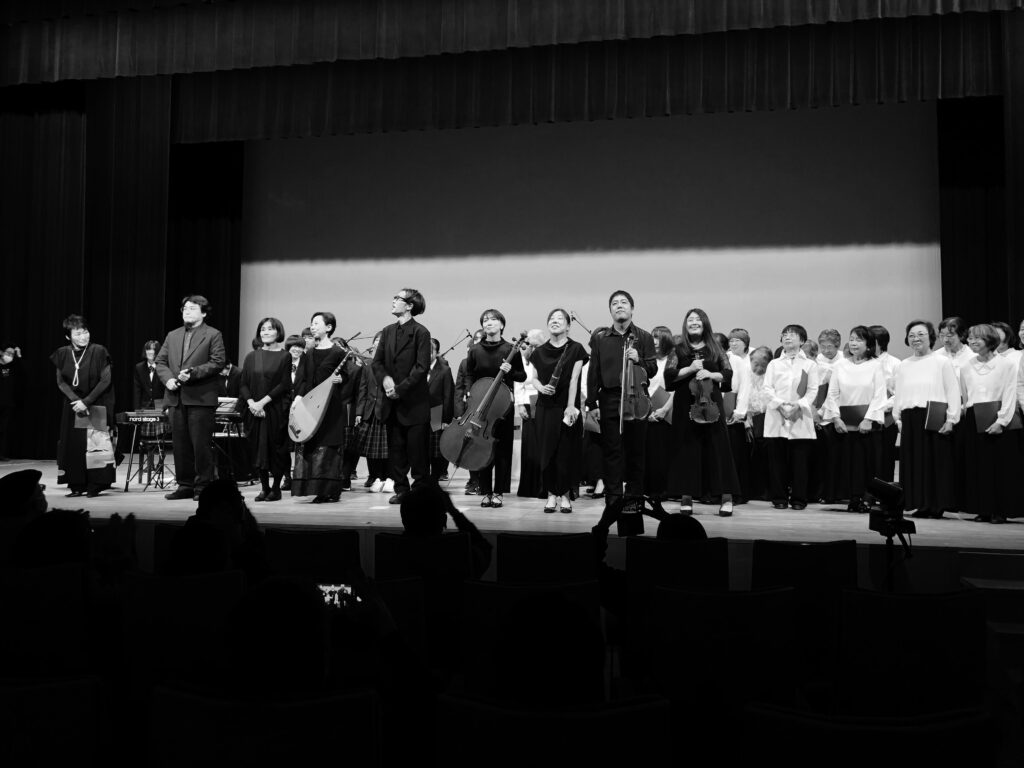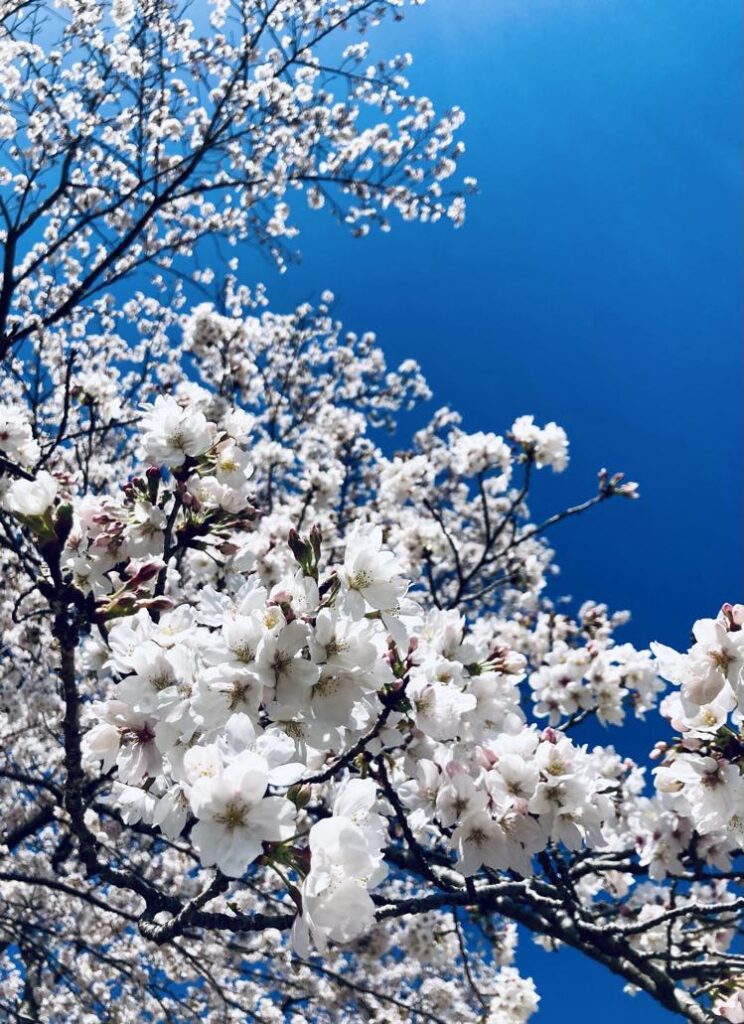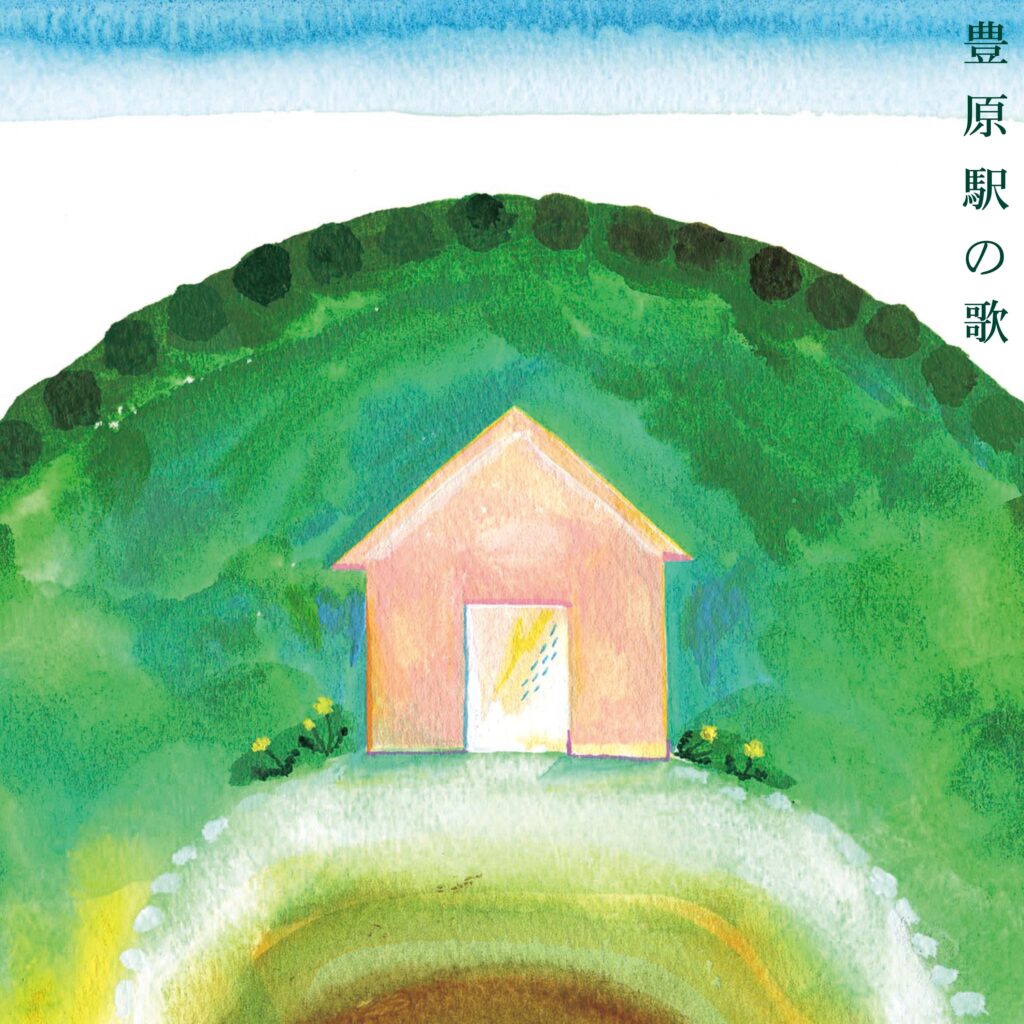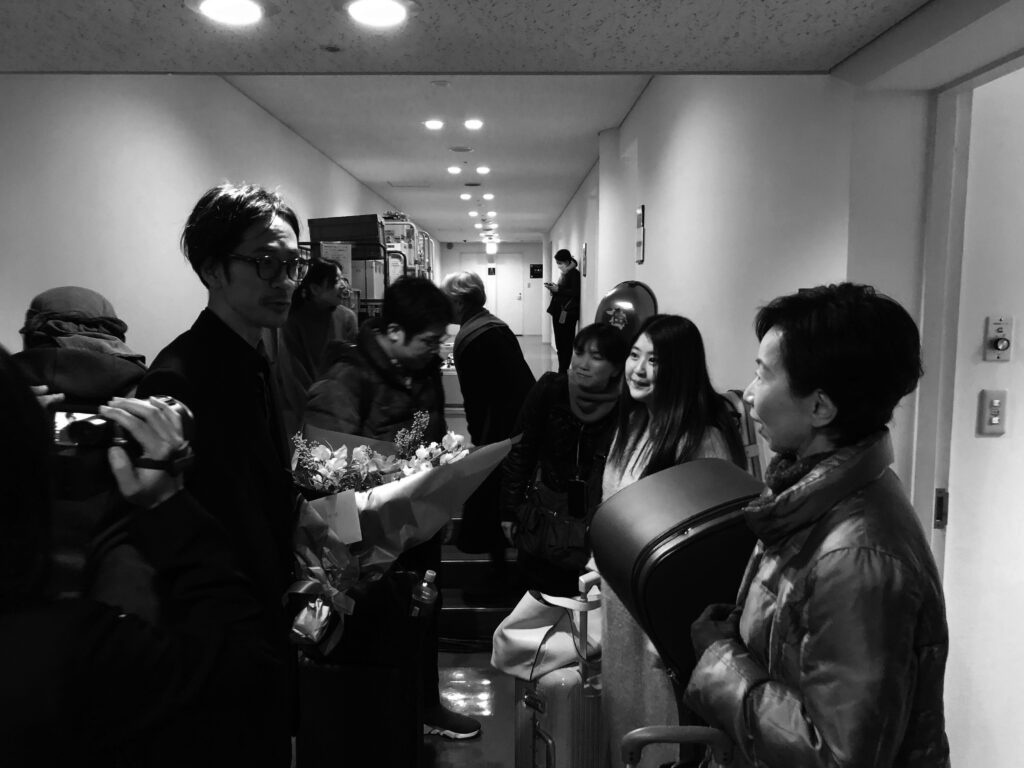
January 12, 2025 - Tochigi Performance @ Nasunogahara Harmony Hall
[Previous Reports on the Tochigi Performance: Report ① | Report ②| Report ③]
◆"Sōjō Netori" and "Sōjō Tokoyo"
With only three pieces remaining, the concert was nearing its finale.
The last pieces performed by the ensemble, comprising gagaku instruments and strings, were "Sōjō Netori" and "Sōjō Tokoyo."
In gagaku, "sōjō" refers to a mode centered around the note equivalent to "G" in Western music. Traditionally, gagaku associates specific modes with seasons, and "sōjō" is linked to spring, often conveying a bright and uplifting atmosphere.
A "netori" is a short prelude that sets the tonal ambiance for the following piece, serving as both an introduction and a tuning segment. It prepares the instruments to bloom into sound.
As the saying goes, "No winter lasts forever; spring is sure to follow."

On this day, Hitomi Nakamura from Reigakusha showcased her versatility—dancing, playing the hichiriki, and performing on the wagon in the final piece. The wagon is an ancient Japanese string instrument believed to predate the introduction of gagaku to Japan. Additionally, Taro Ishida joined in unison singing alongside Yoshiyuki Izaki, a fellow Reigakusha member and ryūteki player.
The gagaku ensemble Reigakusha, to which these musicians belong, was established in 1985 with the aim of researching and performing gagaku ensemble music. It was founded by Sukeyasu Shiba, who served as its music director until 2019. Currently, Mayumi Miyata leads the ensemble. Beyond performing classical gagaku pieces, Reigakusha is dedicated to reviving lost compositions, reconstructing ancient instruments from the Shōsōin repository, and commissioning contemporary works, performing both domestically and internationally. Their self-produced initiatives include biannual regular concerts and an annual gagaku performance for children.
Sukeyasu Shiba (1935–2019) was born into a family of court musicians from the Nara tradition. He served as a musician (gagaku performer) in the Imperial Household Agency, primarily playing the ryūteki. After retiring from the agency in 1984, he founded Reigakusha in 1985. His decision to leave the Imperial Household Agency was unprecedented. It was driven by a desire to pursue better performances of contemporary gagaku compositions, such as Tōru Takemitsu's "In an Autumn Garden."
Taro Ishida:
"The members of Reigakusha are among Japan's top performers. Mr. Izaki and Ms. Nakamura also contributed to the 'SHOGUN' soundtrack. From about a decade ago, when I was still quite inexperienced, these musicians have graciously collaborated with me. Had Mr. Shiba not left the Imperial Household Agency to establish Reigakusha, there would be no one to perform pieces like 'The Book of the Dead' or my own gagaku compositions. I am truly fortunate to be able to create this music through various connections.
I have also worked with the string players for six or seven years now. Their technical skills far surpass mine, but they continue to collaborate with me."
(Turning to the performers)
"It is all thanks to you. Thank you very much.
Now, for our final performance together, we will play 'Sōjō Netori' and 'Sōjō Tokoyo.'"
The atmosphere in the venue softened. The shō emitted vibrant tones, initiating the performance. One by one, the hichiriki, ryūteki, gakubiwa, wagon, vocals, strings, and piano joined in. The music transcended cultural boundaries, with gentle and graceful sounds playfully intertwining, flowing freely and expansively.
Following the performance, the applause resonated warmly.
Taro: "Thank you very much."
Note: The "wagon" is an indigenous Japanese string instrument, also known as "yamato-goto." It is believed to date back to ancient times before the introduction of gagaku to Japan. Made of paulownia wood, it measures approximately 190 cm in length, 18 cm in width, and 4 cm in thickness.
◆"Song of Toyohara Station"

Taro Ishida:
"For our final performance, please welcome the choir from Nasu Town. During my time as a community revitalization coordinator, I composed a piece called 'Song of Toyohara Station.'
Toyohara Station, the northernmost unmanned station in the Kanto region, was renovated for its 130th anniversary, and I was asked to compose a commemorative song. The lyrics were written by Ms. Yukiko Iso, who has been engaged in dairy farming near the station for over 20 years and volunteers as a crossing guard. Every morning, she ensures the safety of elementary school children boarding the train at this unmanned station."
Ms. Iso:
"When JR East renovated Toyohara Station in 2019, I was honored to be asked to write the lyrics. Living about a kilometer from the station, I cultivate rice and raise Japanese Black cattle. This was my first experience writing lyrics. I drew inspiration from the surrounding mountains, rivers, playing children, and rural landscapes, hoping these images would be passed down to the next generation."
Another special guest was Ms. Sumiko Aoki, who has led choirs in Nasu Town for 36 years.
Ms. Aoki:
"When I first started, Nasu Town had almost no musical culture. Today, I direct four choirs, and when the opportunity arose to perform this piece, nearly 40 people volunteered. We rehearsed several times starting late last year, and I am honored to be part of this memorable concert."
Taro:
"I’ve been fortunate to have my music reach international audiences, like in 'SHOGUN', where I was praised for my work. That is, of course, a great honor. However, this song, 'Song of Toyohara Station,' holds a special place in my heart because it is deeply tied to the local community.
A local resident, who cares for the children at the station, wrote the lyrics. I composed the music, and it was recorded and shared with many people. Today, Ms. Aoki and her choir are performing it here. This, to me, is the most meaningful and fulfilling form of music.
The choir members are not being paid—they sing because they want to. They sing because they have something to share. A song created for the community is now being performed by the community, for the people of this town. That deeply moves me."
(Performance: "Song of Toyohara Station"—a heartfelt and sincere piece filled with imagery and love.)
(Applause)
Taro: "That concludes our program. Thank you all very much.
Please give a final round of applause for all the performers.
Thank you from the bottom of my heart."

Performers:
Taro Ishida: Piano, Synthesizer
Hitomi Nakamura: Hichiriki
Kahoru Nakamura: Gaku-biwa
Hanako Nakamura: Sho
Yoshiyuki Izaki: Ryuteki
Riri Tanaka: Violin
Tatsuya Nanasawa: Viola
Nanami Narita: Cello
Written by Atsuko Aoyagi / ao.Inc.
#dailythoughts #japanesetraditionalmusic #composition
#gagaku #composinggagaku #nonmusic #gagakuperformance
#filmmusic #cinematicmusic #spatialmusic #gagakustories #sidenotes
#layer #mysterious #shogun #taroishida